2006.
Alternative Sentencing Program | Tulalip Tribes.
View Report (PDF)Abstract
 Born out of a need to create a judicial system that Tulalip citizens can trust and that also helps offenders to recover rather than just throwing them away, the Tulalip Tribal Court Alternative Sentencing Program supports the development of a safe, healthy, and law abiding community. Focusing on the mental, physical, and spiritual health of offenders, the Program melds indigenous and therapeutic jurisprudence, going beyond just placing offenders in jail. Beginning with the Tulalip Alternative Court and now backed by the entire Tulalip justice system, the nation's strategies for implementing Tulalip law now better reflect the sentiments of one of its traditional sayings, “To pull that canoe, you have to pull together.”
Born out of a need to create a judicial system that Tulalip citizens can trust and that also helps offenders to recover rather than just throwing them away, the Tulalip Tribal Court Alternative Sentencing Program supports the development of a safe, healthy, and law abiding community. Focusing on the mental, physical, and spiritual health of offenders, the Program melds indigenous and therapeutic jurisprudence, going beyond just placing offenders in jail. Beginning with the Tulalip Alternative Court and now backed by the entire Tulalip justice system, the nation's strategies for implementing Tulalip law now better reflect the sentiments of one of its traditional sayings, “To pull that canoe, you have to pull together.”
View Report (PDF)
Explore Interactive Exhibit
2006.
Bad River Recycling/Solid Waste Department | Bad River Band of Lake Superior Tribe of Chippewa Indians.
View Report (PDF)Abstract
 Generations ago, a prophecy told the Anishinabe people to move west to where food grew on water. Migrating from the eastern shores of North America, the Anishinabe people settled throughout the Great Lakes region where wild rice fields grew out of fresh water lakes. For hundreds of years, the Bad River Band lived in present day Wisconsin, harvesting wild rice, hunting, and fishing. Sadly, pollution began to threaten this sensitive ecosystem and the Anishinabe identity. Waste was hazardous and abundant on their lands, despite cultural creation and migration stories stressing environmental stewardship. The Bad River Recycling/Solid Waste Department set about creating environmentally sound practices of managing and disposing waste generated on the reservation, ending cycles of harm caused by poor disposal practices. Now, through community-wide education, incentives, and new waste management systems, the Bad River Band citizens boast a clean, safe, and green reservation environment.
Generations ago, a prophecy told the Anishinabe people to move west to where food grew on water. Migrating from the eastern shores of North America, the Anishinabe people settled throughout the Great Lakes region where wild rice fields grew out of fresh water lakes. For hundreds of years, the Bad River Band lived in present day Wisconsin, harvesting wild rice, hunting, and fishing. Sadly, pollution began to threaten this sensitive ecosystem and the Anishinabe identity. Waste was hazardous and abundant on their lands, despite cultural creation and migration stories stressing environmental stewardship. The Bad River Recycling/Solid Waste Department set about creating environmentally sound practices of managing and disposing waste generated on the reservation, ending cycles of harm caused by poor disposal practices. Now, through community-wide education, incentives, and new waste management systems, the Bad River Band citizens boast a clean, safe, and green reservation environment.
View Report (PDF)
2006.
Citizen Potawatomi Community Development Corporation | Citizen Potawatomi Nation.
View Report (PDF)Abstract
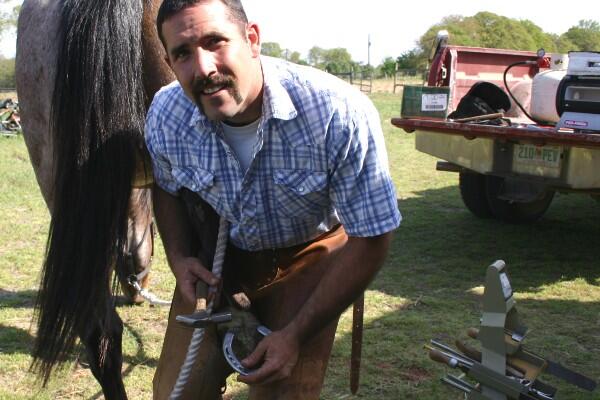 Historically, the Potawatomi enjoyed a strong economy built on trading with Native nations throughout North America and with European settlers. Unfortunately, forced removal from the Great Lakes region to what is now Kansas, and then again to Oklahoma, brought about drastic political, cultural, and economic changes. The Citizen Potawatomi Nation's government and its citizens suffered from political instability and a weakened tribal economy. To address these concerns, the Nation began laying the necessary groundwork to rebuild itself. It reformed government institutions and established a number of successful tribal enterprises, including a gaming and entertainment center, grocery stores, and a bank. But the Nation also wanted to grow the private sector within its economy and encourage citizens, who may lack the credit records necessary for bank loans, to go into business for themselves. The solution was to establish the Citizen Potawatomi Community Development Corporation, a CDFI that offers, among other things, micro loans, commercial loans, an employee loan program, financial literacy education, and credit counseling to the Nation's citizens around the U.S. and to all American Indians in Oklahoma.
Historically, the Potawatomi enjoyed a strong economy built on trading with Native nations throughout North America and with European settlers. Unfortunately, forced removal from the Great Lakes region to what is now Kansas, and then again to Oklahoma, brought about drastic political, cultural, and economic changes. The Citizen Potawatomi Nation's government and its citizens suffered from political instability and a weakened tribal economy. To address these concerns, the Nation began laying the necessary groundwork to rebuild itself. It reformed government institutions and established a number of successful tribal enterprises, including a gaming and entertainment center, grocery stores, and a bank. But the Nation also wanted to grow the private sector within its economy and encourage citizens, who may lack the credit records necessary for bank loans, to go into business for themselves. The solution was to establish the Citizen Potawatomi Community Development Corporation, a CDFI that offers, among other things, micro loans, commercial loans, an employee loan program, financial literacy education, and credit counseling to the Nation's citizens around the U.S. and to all American Indians in Oklahoma.
View Report (PDF)
2006.
Cultural Education and Revitalization Program | Makah Nation.
See Full Report (PDF)Abstract
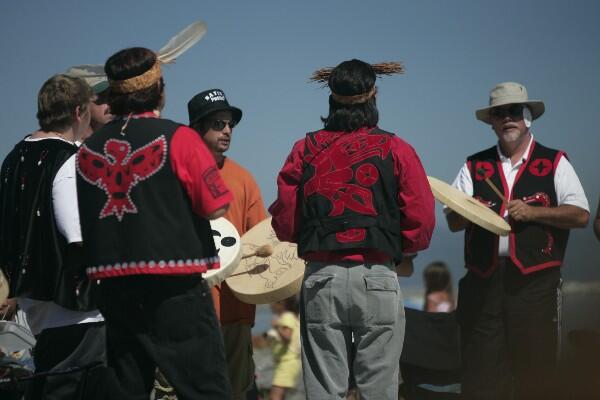 As the westernmost Indian reservation in the lower 48 states, the Makah Reservation was established by the 1855 Treaty of Neah Bay. Historically, the Makah lived in large, extended family longhouses organized in coastal villages and drew their sustenance in large part from the sea. First contact between Makah people and non-natives began in the 1790s with devastating and long-lasting effects. The Makah were not only besieged by disease and epidemics that resulted in great population loss, but eventually their language fluency and culture were greatly diminished by the establishment of Bureau of Indian Affairs' schools. But in the 1970s, the nation turned a potential crisis to its advantage through the establishment of the Makah Cultural Education and Revitalization Program. It serves as a hub of the community, as well as steward of a world-class museum collection. By claiming and caring for the treasures of its ancestors, the Makah Nation ensures the cultural viability of its people.
As the westernmost Indian reservation in the lower 48 states, the Makah Reservation was established by the 1855 Treaty of Neah Bay. Historically, the Makah lived in large, extended family longhouses organized in coastal villages and drew their sustenance in large part from the sea. First contact between Makah people and non-natives began in the 1790s with devastating and long-lasting effects. The Makah were not only besieged by disease and epidemics that resulted in great population loss, but eventually their language fluency and culture were greatly diminished by the establishment of Bureau of Indian Affairs' schools. But in the 1970s, the nation turned a potential crisis to its advantage through the establishment of the Makah Cultural Education and Revitalization Program. It serves as a hub of the community, as well as steward of a world-class museum collection. By claiming and caring for the treasures of its ancestors, the Makah Nation ensures the cultural viability of its people.
View Report (PDF)
2006.
Homeownership: Financial, Credit & Consumer Protection Program | Confederated Tribes of the Umatilla Indian Reservation.
View Report (PDF)Abstract
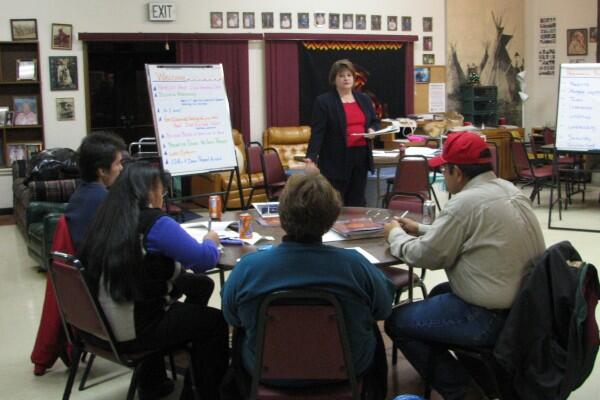 Recognizing the links between promoting a strong economy, maintaining positive cultural connections, and having the ability to own a home, the Umatilla Housing Authority promotes the Wapayatat Homeownership: Financial, Credit & Consumer Protection Program. The seven-week course provides asset building and saving strategies, while generating awareness about predatory lending practices. The Program also assists citizens in developing financial literacy skills using culturally grounded curriculum, bringing the dream of homeownership closer to reality. Under the Umatilla Individual Development Account (IDA) program, the Confederated Tribes provide a savings-match incentive, giving tribal citizens up to 3 years to successfully close a home loan. As citizens build and own homes on tribal land, wealth is accumulated and the community, economy, and the Tribes are strengthened.
Recognizing the links between promoting a strong economy, maintaining positive cultural connections, and having the ability to own a home, the Umatilla Housing Authority promotes the Wapayatat Homeownership: Financial, Credit & Consumer Protection Program. The seven-week course provides asset building and saving strategies, while generating awareness about predatory lending practices. The Program also assists citizens in developing financial literacy skills using culturally grounded curriculum, bringing the dream of homeownership closer to reality. Under the Umatilla Individual Development Account (IDA) program, the Confederated Tribes provide a savings-match incentive, giving tribal citizens up to 3 years to successfully close a home loan. As citizens build and own homes on tribal land, wealth is accumulated and the community, economy, and the Tribes are strengthened.
View Report (PDF)
2006.
The Hopi Child Care Program | Hopi Tribe.
View Report (PDF)Abstract
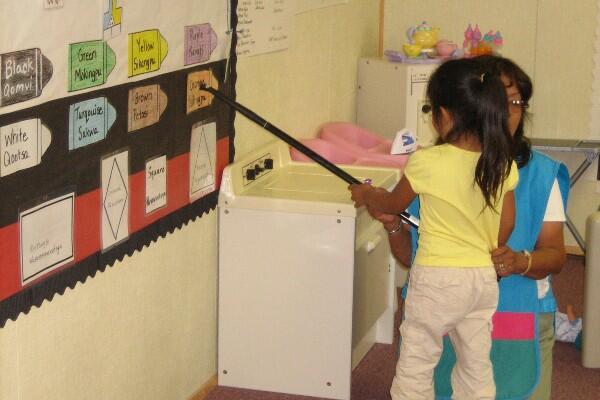 The Hopi Child Care Program facilitates parents' access to high quality child care when demands of work or educational pursuits require them to be away from home. Understanding the importance of early childhood development coupled with the need for culturally appropriate care, Hopi citizens now have the ability to better provide for their families. The Program gives parents the security of knowing their children are safe, while providing affordable and accessible channels to ensure their wellbeing. As the Hopi Tribe affirms, “Children are our greatest resource. How they are treated as young children impacts the future of the Hopi Tribe.”
The Hopi Child Care Program facilitates parents' access to high quality child care when demands of work or educational pursuits require them to be away from home. Understanding the importance of early childhood development coupled with the need for culturally appropriate care, Hopi citizens now have the ability to better provide for their families. The Program gives parents the security of knowing their children are safe, while providing affordable and accessible channels to ensure their wellbeing. As the Hopi Tribe affirms, “Children are our greatest resource. How they are treated as young children impacts the future of the Hopi Tribe.”
View Report (PDF)
2006.
Hopi Education Endowment Fund | Hopi Tribe.
View Report (PDF)Abstract
 For many years, the Hopi Tribe has seen education as a critical tool in its effort to ensure the survival of its people while at the same time preserving its own way of life. Over the years, the Tribe has made major strides in education, and now there are an increasing number of citizens attending college. Yet, many Hopi students struggle with the costs of higher education. At the urging of citizens from the various tribal villages, the Hopi Tribal Council established the Hopi Education Endowment Fund to provide financial assistance for education to Hopi students of all ages. Organized as a tribally chartered non-profit corporation, the Fund is an innovative form of community investment that also supports the Tribe's self-governance. By investing in the human capital of Hopi's greatest resource its citizens the Fund promotes the Hopi concept of “Sumi'nangwa”, coming together to do things for the benefit of all.
For many years, the Hopi Tribe has seen education as a critical tool in its effort to ensure the survival of its people while at the same time preserving its own way of life. Over the years, the Tribe has made major strides in education, and now there are an increasing number of citizens attending college. Yet, many Hopi students struggle with the costs of higher education. At the urging of citizens from the various tribal villages, the Hopi Tribal Council established the Hopi Education Endowment Fund to provide financial assistance for education to Hopi students of all ages. Organized as a tribally chartered non-profit corporation, the Fund is an innovative form of community investment that also supports the Tribe's self-governance. By investing in the human capital of Hopi's greatest resource its citizens the Fund promotes the Hopi concept of “Sumi'nangwa”, coming together to do things for the benefit of all.
View Report (PDF)
2006.
Indian Child Welfare Services | Houlton Band of Maliseet Indians.
View Report (PDF)Abstract
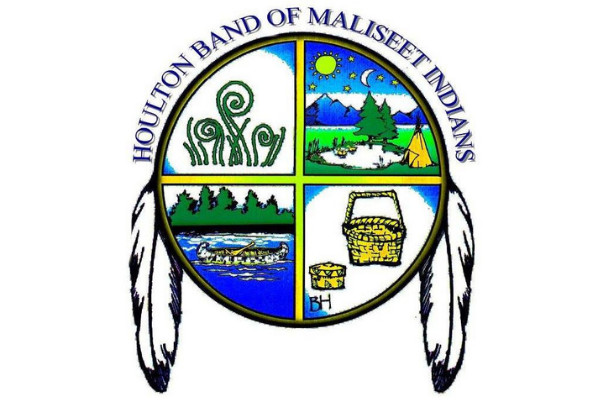 For years, the state of Maine lacked appropriate procedures for identifying Native children in child welfare cases. Contrary to the intent of the Indian Child Welfare Act, Maine also failed to recognize Native nations' sovereign rights in such cases. Seeking to assert the tribe's right to help determine its children's futures, the Houlton Band of Maliseet Indians formed a Department of Indian Child Welfare Services. In turn, the Department developed a strategy to gain the respect of state child welfare authorities and to establish collaborative working relationships. In 2002, the Band and State signed an MOA establishing their partnership. Today they both make appointments to a Child Protective Team that manages placements and services for Maliseet children. Through culturally and family appropriate solutions, the team's work has drastically reduced the number of children in out-of-home-care situations. Together, the Houlton Band's programs, policies, and intergovernmental collaboration support families, improve government-to-government relations and reclaim the tribe's future its children.
For years, the state of Maine lacked appropriate procedures for identifying Native children in child welfare cases. Contrary to the intent of the Indian Child Welfare Act, Maine also failed to recognize Native nations' sovereign rights in such cases. Seeking to assert the tribe's right to help determine its children's futures, the Houlton Band of Maliseet Indians formed a Department of Indian Child Welfare Services. In turn, the Department developed a strategy to gain the respect of state child welfare authorities and to establish collaborative working relationships. In 2002, the Band and State signed an MOA establishing their partnership. Today they both make appointments to a Child Protective Team that manages placements and services for Maliseet children. Through culturally and family appropriate solutions, the team's work has drastically reduced the number of children in out-of-home-care situations. Together, the Houlton Band's programs, policies, and intergovernmental collaboration support families, improve government-to-government relations and reclaim the tribe's future its children.
View Report (PDF)
2006.
Morongo Tutoring Program | Morongo Band of Mission Indians.
See Full Report (PDF)Abstract
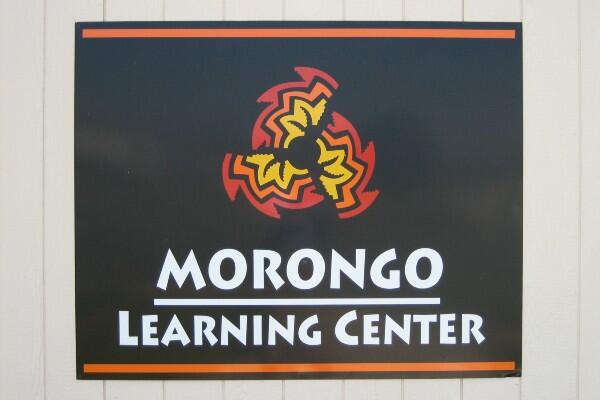 Located in the Banning Pass between San Bernardino and Palm Springs in southern California, the Morongo Band of Mission Indians has worked to address low academic achievement and high dropout rates among its high school students since the early 1990s. Despite the Band's economic successes, few citizens finished high school or attended college. In 1991, with concern among elders and parents mounting, the Band began to offer tutoring services on a small scale. Today, the program has grown beyond offering tutoring services only; it now works in partnership with the local school district and is a complete life skills program that helps students grow as learners, giving them the tools necessary to achieve the academic success they want. Absenteeism is down, graduation rates are up, more people are enrolling in college, and students are testing at or above district levels in all grades. The Morongo Band has transformed the educational experience for its children, creating lasting benefits for the Band and its people.
Located in the Banning Pass between San Bernardino and Palm Springs in southern California, the Morongo Band of Mission Indians has worked to address low academic achievement and high dropout rates among its high school students since the early 1990s. Despite the Band's economic successes, few citizens finished high school or attended college. In 1991, with concern among elders and parents mounting, the Band began to offer tutoring services on a small scale. Today, the program has grown beyond offering tutoring services only; it now works in partnership with the local school district and is a complete life skills program that helps students grow as learners, giving them the tools necessary to achieve the academic success they want. Absenteeism is down, graduation rates are up, more people are enrolling in college, and students are testing at or above district levels in all grades. The Morongo Band has transformed the educational experience for its children, creating lasting benefits for the Band and its people.
View Report (PDF)
2006.
Navajo Nation Methamphetamine Task Force | Navajo Nation.
See Full Report (PDF)Abstract
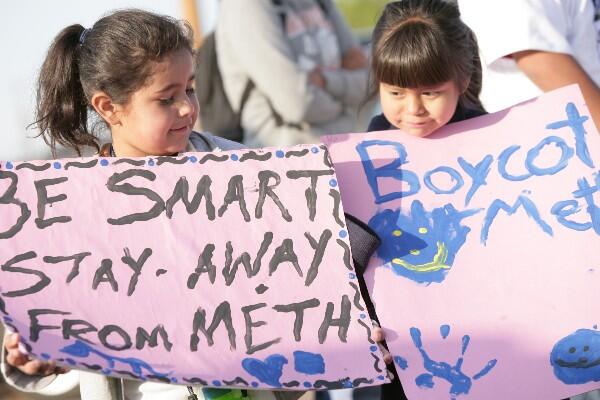 Navajo community leaders describe the methamphetamine phenomenon as a tidal wave that is overwhelming the entire community. The Navajo Nation police force estimates that 60% of all crimes committed on the reservation are methamphetamine related. In 2006, national news focused on the Navajo Nation as three generations were arrested together for use, distribution, and manufacturing of methamphetamine. Taking a proactive stance on policy issues, options, and recommendations in the areas of prevention, treatment, and/or enforcement, the Methamphetamine Task Forces actively combat the tidal wave of destruction within their communities. Drawing upon education, community involvement, cultural philosophies, and collaborations to address the burgeoning crisis, the Task Forces incorporate participation from elders, youth, recovered addicts and current users, law enforcement, health officials, and policy makers to embrace ‘The Beauty Way of Life,’ to systematically fight what many view as the most dire crisis in recent history.
Navajo community leaders describe the methamphetamine phenomenon as a tidal wave that is overwhelming the entire community. The Navajo Nation police force estimates that 60% of all crimes committed on the reservation are methamphetamine related. In 2006, national news focused on the Navajo Nation as three generations were arrested together for use, distribution, and manufacturing of methamphetamine. Taking a proactive stance on policy issues, options, and recommendations in the areas of prevention, treatment, and/or enforcement, the Methamphetamine Task Forces actively combat the tidal wave of destruction within their communities. Drawing upon education, community involvement, cultural philosophies, and collaborations to address the burgeoning crisis, the Task Forces incorporate participation from elders, youth, recovered addicts and current users, law enforcement, health officials, and policy makers to embrace ‘The Beauty Way of Life,’ to systematically fight what many view as the most dire crisis in recent history.
View Report (PDF)
2006.
Red Lake Walleye Fishery Recovery Project | Red Lake Band of Chippewa Indians.
View Report (PDF)Abstract
 The Red Lake Band of Chippewa Indians have long depended on the fish that live in Red Lake, the sixth largest body of freshwater in the United States. Both the waters and walleye of the lake are central to the Red Lake Band people, its history, economy, and culture. But by the mid-1990s, the walleye population had collapsed from over-fishing. Taking drastic but necessary action, the Band negotiated a consensus arrangement with local fishermen and state and federal officials to ban fishing in the lake. Over a ten-year period the fish recovered at an astonishing rate. The tribally led Red Lake Recovery Project now determines when, how, and who can fish the historic waters from which the Band claims its name.
The Red Lake Band of Chippewa Indians have long depended on the fish that live in Red Lake, the sixth largest body of freshwater in the United States. Both the waters and walleye of the lake are central to the Red Lake Band people, its history, economy, and culture. But by the mid-1990s, the walleye population had collapsed from over-fishing. Taking drastic but necessary action, the Band negotiated a consensus arrangement with local fishermen and state and federal officials to ban fishing in the lake. Over a ten-year period the fish recovered at an astonishing rate. The tribally led Red Lake Recovery Project now determines when, how, and who can fish the historic waters from which the Band claims its name.
View Report (PDF)
View All Star Profile
2006.
Task Force on Violence Against Women | National Coalition of Native Nations & Organizations Affiliated through the National Congress of American Indians.
See Full Report (PDF)Abstract
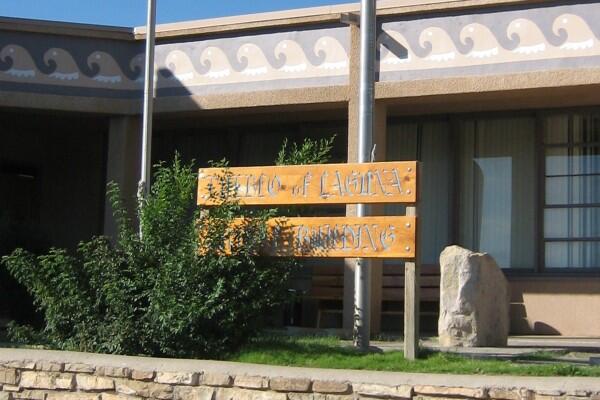 Recognizing and acting upon the belief that safety for Native women is among their highest priorities, leadership from Native nations joined with Native and non-Native grassroots coalitions and organizations over 500 entities in total to create an ongoing national movement educating Congress on the need for enhancing the safety of Native women. Formalizing their affiliation through the National Congress of American Indians (NCAI), the coordinated efforts led to the 2005 re-authorization of the Violence Against Women Act (VAWA). The Act includes financial resources and protection for Native women, a first in the history of the VAWA. Now, tribal governments are better situated to combat the scourge of domestic violence present in Indian Country and mark a return to more traditional modes of honoring family and community.
Recognizing and acting upon the belief that safety for Native women is among their highest priorities, leadership from Native nations joined with Native and non-Native grassroots coalitions and organizations over 500 entities in total to create an ongoing national movement educating Congress on the need for enhancing the safety of Native women. Formalizing their affiliation through the National Congress of American Indians (NCAI), the coordinated efforts led to the 2005 re-authorization of the Violence Against Women Act (VAWA). The Act includes financial resources and protection for Native women, a first in the history of the VAWA. Now, tribal governments are better situated to combat the scourge of domestic violence present in Indian Country and mark a return to more traditional modes of honoring family and community.
View Report (PDF)
2006.
Tribal Land Title and Records Office | Saginaw Chippewa Indian Tribe of Michigan.
View Report (PDF)Abstract
 For years, limited on-reservation housing options forced citizens of the Saginaw Chippewa Indian Tribe to look elsewhere to live. Taking action to solve this problem, the Tribe encouraged private lenders to offer mortgages on trust land and to offer terms and rates similar to those available off the reservation. A critical component of this solution was the creation of the Saginaw Chippewa Tribal Land Title and Records Office, which keeps all records and verifies all titles pertaining to trust lands, replacing the BIA's much slower and more cumbersome process. As a result, private mortgage lending has increased, there is a housing boom on Saginaw lands, and economic development options that were simply impossible before have emerged. Most importantly, citizens are moving back home.
For years, limited on-reservation housing options forced citizens of the Saginaw Chippewa Indian Tribe to look elsewhere to live. Taking action to solve this problem, the Tribe encouraged private lenders to offer mortgages on trust land and to offer terms and rates similar to those available off the reservation. A critical component of this solution was the creation of the Saginaw Chippewa Tribal Land Title and Records Office, which keeps all records and verifies all titles pertaining to trust lands, replacing the BIA's much slower and more cumbersome process. As a result, private mortgage lending has increased, there is a housing boom on Saginaw lands, and economic development options that were simply impossible before have emerged. Most importantly, citizens are moving back home.
View Report (PDF)
2006.
Winnebago Community Development Fund | Winnebago Tribe of Nebraska.
View Report (PDF)Abstract
 The Winnebago Community Development Fund is helping to build a better future for its nation by establishing a framework for community development based on the goals of the government and its citizens. To overcome revenue shortfalls that many rural communities face, the Winnebago Tribe creatively implemented a tax and designated tax proceeds for the building of a fund intended to support community activities and infrastructure. Administered through a tribally-chartered, non-profit organization, the Fund provides matching grants for projects that positively impact the community. By earmarking tax revenues and establishing well-designed procedures for project selection, the Winnebago Tribe better fulfills essential governmental responsibilities with steady funding and efficient and effective administration.
The Winnebago Community Development Fund is helping to build a better future for its nation by establishing a framework for community development based on the goals of the government and its citizens. To overcome revenue shortfalls that many rural communities face, the Winnebago Tribe creatively implemented a tax and designated tax proceeds for the building of a fund intended to support community activities and infrastructure. Administered through a tribally-chartered, non-profit organization, the Fund provides matching grants for projects that positively impact the community. By earmarking tax revenues and establishing well-designed procedures for project selection, the Winnebago Tribe better fulfills essential governmental responsibilities with steady funding and efficient and effective administration.
View Report (PDF)